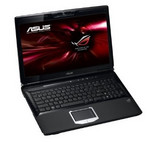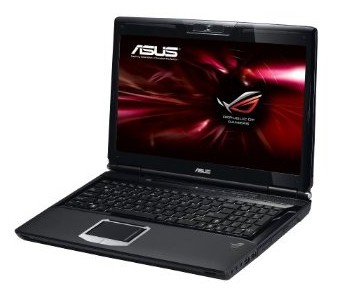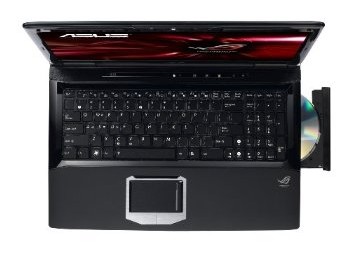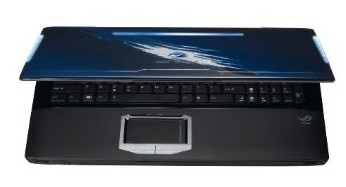Asus G51J-A1
Specifications

Price comparison
Average of 3 scores (from 5 reviews)
Reviews for the Asus G51J-A1
Source: Laptop Mag
 Archive.org version
Archive.org versionThis Core i7 gaming notebook gives you a lot of power and a full HD screen for a good price.
If you want to blow away zombies but you’re not one of the beneficiaries of a trust fund or Wall Street bonus, you’ll find that the $1,499 G51J-A1 is every bit as capable as top-end rigs. The Alienware M15x offers slightly better performance and cool extras like customizable lighting, but it costs $1,874 when similarly configured to the G51J-A1. In other words, this rig is a killer value.
Single Review, online available, Long, Date: 11/20/2009
Rating: Total score: 80%
Source: Hot Hardware
 Archive.org version
Archive.org versionAll in all, the G51J-A1 is great at being itself, but not so great at being your "do-it-all" 15" notebook. The keyboard is just too lackluster to be used for daily typing chores, note taking, etc., and the battery is too poor to use on the road for any real length of time. It's a portable gaming rig in a form factor that's smaller than those gigantic 17" and 18.4" machines out there and that's about it.
Single Review, online available, Long, Date: 11/09/2009
Rating: price: 90% performance: 95% mobility: 40% emissions: 40%
Source: Computer Shopper
 Archive.org version
Archive.org versionGamers are known to plunk down wads of cash for their battle gear, but not everybody has thousands of dollars to spend on a top-of-the-line 3D notebook. Enter the Asus G51J-A1, a relatively affordable ($1,499) 15-inch, 7.3-pound notebook featuring an Intel Core i7 processor and a stunning 1080p high-def display. This slick-looking system may be more travel-friendly than the big rigs, but it doesn’t offer the kind of 3D performance that gamers crave. Offering more portability than its desktop-replacement brethren, the Asus G51J-A1 delivers good productivity performance, but its gaming performance is subpar.
Single Review, online available, Long, Date: 11/01/2009
Rating: Total score: 72%
Foreign Reviews
Source: c't - 9/10

Single Review, , Long, Date: 04/01/2010
Rating: performance: 85% mobility: 30% ergonomy: 70% emissions: 30%
Source: Portables4Gamers
 FR→EN Archive.org version
FR→EN Archive.org versionSingle Review, online available, Long, Date: 12/06/2009
Rating: Total score: 40%
Comment
NVIDIA GeForce GTX 260M:
The Nvidia GeForce GTX 260M is essentially a higher clocked GeForce 9800M GTX based on the G92b core built under a 55nm manufacturing process. Because of the architectural difference, the 260M is less powerful (and quite dissimilar) to the similarly named desktop GeForce GTX 260.
Modern games should be playable with these graphics cards at low settings and resolutions. Casual gamers may be happy with these cards.
» Further information can be found in our Comparison of Mobile Graphics Cards and the corresponding Benchmark List.
Intel Core i7: The Intel Core i7 for laptops is based on the LG1156 Core i5/i7 CPU for desktops. The base clock speed of the CPUs is relatively low, but because of a huge Turbo mode, the cores can dynamically overclock to up to 3.2 GHz (920XM). Therefore, the CPU can be as fast as high clocked dual-core CPUs (using single threaded applications) but still offer the advantage of 4 cores. Because of the large TDP of 45 W / 55 W, the CPU is only intended for large laptops.
720QM: The Core i7-720QM is the slowes Core i7 Quad Core in 2009 and clocks between 1.6 and 2.8 GHz (due to the Turbo Mode). Therefore, it combines the advantages of a slow quad core CPU with a fast single core one. Compared to the faster Core i7 mobile CPUs, the 720QM only features 6MB L3 Cache.» Further information can be found in our Comparison of Mobile Processsors.


















